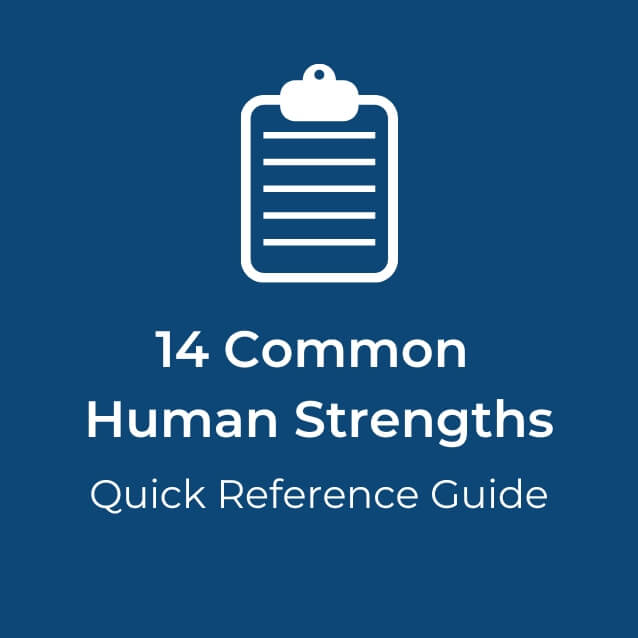Effective communication steers many a ship, from businesses to professional teams to personal relationships. Left unchecked, in effective communication negatively impacts all of the above. From a business standpoint, this topic couldn’t be more important; it’s a driving force in productivity, work culture, and ultimately, a company’s profits.
In fact, looking back on my 52-year career in business and leadership coaching, it’s fair to say that effective communication is probably the #1 topic I’ve dealt with, time and again. Not every client realizes how many problems are in fact fueled by communication issues. But it’s everywhere, always.
The list of issues that trace back to a lack of effective communication includes
- Inefficiency
- Poor motivation
- Lagging innovation
- Inadequate culture
- Unwise hiring
- Low creativity
- Lack of engagement
- Teamwork issues
- Even toxic leadership
I could go on. But I’d rather turn to the positive.
Often, we spend more time talking about communication issues than solving them. Or we avoid the topic altogether and focus on one of the above outcomes instead of the core problem.
No more avoiding it here. We’re tackling this head on, with a solution mindset. In this 5-minute read, we’re rethinking effective communication with new knowledge and tools.
Effective Communication in 2 Parts
Good communication is not complex or daunting. But it does involve 2 new ways of thinking. And depending on you, your team, and your organization, these can prove to be major paradigm shifts.
- Effective communication hinges at least as much on who we talk to as on what we say.
- Effective communication is objective focused, rather than output focused.
Clearly, we need to unpack this a bit. But you’ll pick it up quickly. And the fun part is, once you absorb the concepts, you’ll have endless opportunities to improve. The sooner you learn, the sooner you can start practicing.
1. Attributes-Centered Exchanges
The first step in improving communication hinges not on words but on people. I call the method Attributes-Centered Exchanges, or the ACE approach.
ACE communication is rooted in the fact that every one of us has intrinsic strengths—natural, power-alley attributes that affect the way we see the world and interact. As we learn to understand and optimize our attributes, as well as identify the natural wiring of others, we take the first steps in more effective communication.
From there, the path forward is clear: communicate with the other person’s natural attributes and wiring in mind, so that you can be understood.
3 Steps of ACE Communication:
- Learn your own attribute profile.
- Identify at least 1 – 2 high attributes of the person with whom you’re communicating.
- Based on your attributes and the other person’s attributes, speak in a “language” you both know.
We all have natural strengths that strongly influence how we see the world and interact with it. So of course, those strengths—or attributes—also have a strong influence on how we perceive and understand.
But how often do we communicate from our own attributes, forgetting the importance of speaking to the other person’s? If we’re savvy enough to understand this important point, we can make great strides in clearer, more effective communication.
An ACE Analogy
Let’s say you speak English and German fluently, and you’re proficient in French—not fluent, but good.
You’re about to speak with someone who’s also a bit of a linguist; he speaks French fluently, as well some Spanish and Japanese.
In what language will the 2 of you communicate? French of course! Because the language you have in common is your best path to effective communication.
If you start in English or German, because those are your best languages, the other person isn’t going to catch your meaning—in this case, not at all!
How often do we do this with attributes? Time and again, we approach an interchange with communication that’s in keeping with our own attributes, rather than considering whether our approach will resonate with the other person’s way of thinking and understanding.
And then we wonder why we struggle to gain buy-in, alignment, or even clarity. Évidemment, it’s because we’re speaking a different language!
An ACE Example, Bad and Good
This ACE communication tool really comes to life with an example. (For this to make sense, it will help to have a basic understanding of the 14 core human attributes, so grab this list if you’re not already familiar with the terms used below.)
Greg is a high Logician and low Relational. He views things logically, likes facts, and relies on data in decision making. He is also a power-alley Developer, meaning he naturally wants to help others grow.
Becky is a high Relational and low Logician. She is tuned into people’s feelings and emotions, and she tends to make decisions based on how she believes people will feel about the intended outcome. She is also a high Developer.
Version 1:
Becky hasn’t studied attributes extensively enough to understand that many people don’t care about human feelings like she does. She operates with an underlying belief that others are tuned into emotional factors, like she is.
Becky comes to her boss, Greg, to discuss a lack of camaraderie on the team. She sees this as a major problem and believes that she and her colleagues are unhappy because they don’t have more opportunities to “get to know” one another. This is exactly how she describes the issue to Greg.
The conversation does not go well. Greg’s initial response is silence. After a pause, he asks Becky how she sees this affecting their outcomes. From there, the conversation not only becomes unproductive, but frustration mounts and the seeds of misconception are planted: Becky gets the impression that Greg is indifferent, and Greg gets the impression that Becky is distracted from the mission of the team.
It’s a communication breakdown. And it could have been avoided had attributes been taken into account.
Now let’s rewind and play a different version of the scene:
Version 2:
Becky is a student of attributes, and she’s already realized that she and Greg are wired differently. So when she wants to discuss the team’s lack of camaraderie, she takes some time to think about how this issue will most make sense from Greg’s point of view.
Logic is one of her major challenge areas, so the Logician route is a no-go.
However, Becky is a high Developer, and she’s learned from her performance reviews that Greg is a Developer as well. He genuinely cares about his team members’ growth and education, likes to highlight their successes with higher-ups, and has even shared some statistics about the value of mentoring. So Becky sees that this is one place where they have some attribute overlap.
In addition to considering Greg’s attributes, Becky’s effort toward ACE communication pushes her to get more specific about her goal. Yes, she wants to persuade Greg that team-building efforts are needed. And yes, what started this is her Relational desire for everyone to get along.
But as she honestly looks at the situation, Becky recognizes other beliefs: better team relationships are likely to improve creativity, engagement, and opportunities for the growth and development of all. And those facts will probably resonate with Greg’s high Developer attribute.
Finally, Becky gets creative before their meeting. She’s noticed that Greg likes lists, so she takes a few minutes to outline some points and ideas on paper.
As she enters Greg’s office with her list in hand, Becky smiles to herself, realizing that the ACE approach actually helped her better think through the challenge.
The conversation doesn’t just proceed without frustration and misconception. It’s actually productive, and Becky is tasked with taking one of the action steps she included in her list.
Important! An ACE Communication Caution
Notice that Becky did not try to “speak Logician.” I could have written a whole separate scenario to illustrate the problems with that approach, but the point is simple: Becky is a low Logician, and she should not pretend otherwise.
Trying to “speak” in the language of an attribute you don’t possess is as effective as trying to speak a language you don’t know at all. Do this, and chances are good that you won’t just fail to get your point across; you’ll likely give a completely wrong impression and create greater confusion.
The key to effective communication is to identify an attribute that both you and your audience have in common. Then, speak from that place, using whatever language and tools fit the bill.
2. Examine Your Objectives—Honestly
ACE communication is game-changing. But there’s an additional step that Becky took in the above example, and it’s the other key to effective communication.
As she was preparing to speak with Greg about an issue she believed in strongly, Becky stopped to think about her objective. And she admitted what most of us don’t: her first goal was to persuade Greg to her point of view.
The fact is, this is often the un-stated, un-identified goal of our communication. Which is fine; it’s a starting point. But since it’s clearly not the best goal for value-driven progress, many of us shy away from admitting it—or digging deeper.
The result is problematic: because we don’t examine our goal more closely, we come to the conversation with a very narrow definition of what success looks like. This implicit bias toward our own pathway and opinion produces some nasty outcomes:
- It makes you resistant to other possibilities, so you miss opportunities for success.
- It manifests itself in the way you speak—from your tone to the content of your speech. So it can limit your persuasiveness.
- It can make you come across as egotistical or position you to shut other people down, which in turn contributes to toxic employee relations or toxic leadership.
But while you may not like that list, you probably still want to accomplish your goal. How can you avoid a mess but still get your way? By getting a little brave and very honest, and looking at the goal from another vantage point—including those that might oppose you.
If you take time to do this, it’s very likely that you will discover shared ground. This is because of the often-forgotten fact that you and your colleagues, employees, and managers all have a common goal: the success of your business.
Don’t be afraid to hold your ideas and critiques up to the light of others’ attributes. Your team members all bring different perspectives, strengths, and expertise to the table, and it’s at the overlap of these strength areas that the greatest objectives are accomplished.
So ask—honestly—why does this matter to me? Then why does this matter to them?
The answer will serve everyone well.
Let me know how it goes.
3 Steps & Resources for Effective Communication
If you’d like to try to make your next conversation an Attributes-Centered Exchange but you’re not already a student of attributes, these steps and resources will be helpful:
- Identify your Attributes: If you’ve read Why Make Eagles Swim?, then you know this is a multi-step process. Your free readers’ attributes profile is a great place to begin, so start that process if you haven’t already. Not yet read the book? Grab this free strengths tool as an early step.
- Listening for Revelation: Before you can communicate in the language of another person’s attributes, you need to identify what those attributes are—with a tool that you can use at the speed of life. This post will help you begin.
- List of Core Human Attributes: This basic reference tool will be useful as you learn to identify and communicate to various attributes. Already familiar with this list and want to go further? Contact my team, and we’ll be happy to send you a more extensive list of human attributes.
Next? If you’re ready to become an expert, schedule an intro call—and be sure to ask about the Attributes Academy.





Leave a Reply